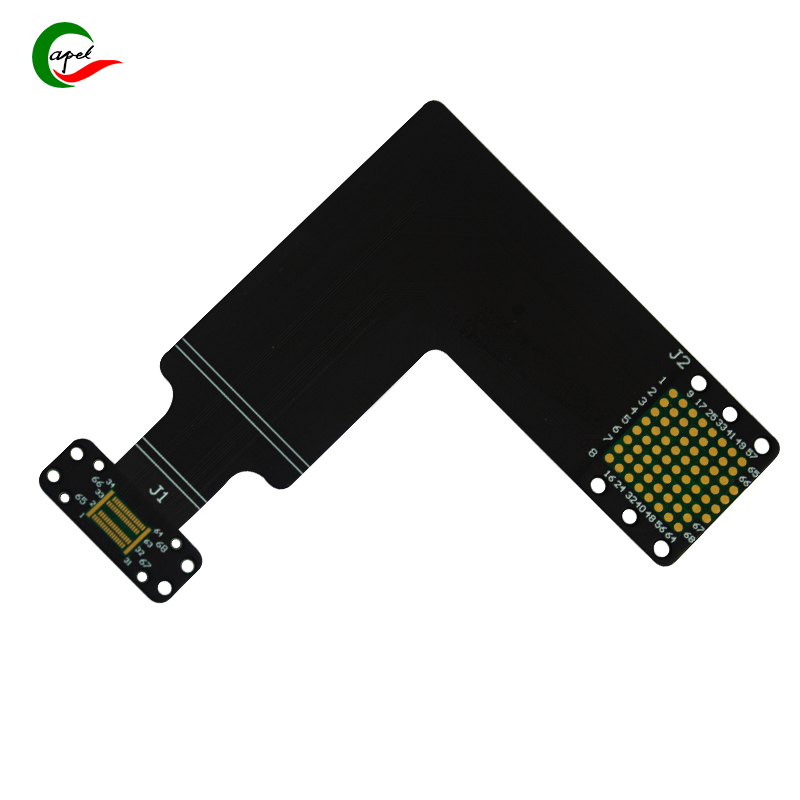Date: 2025-10-18
Dealing with stress concentration in rigid-flex PCB designs requires careful attention to mechanical design principles. Through our experience with foldable devices and industrial applications, we've developed practical approaches that significantly improve flex circuit durability.
Understanding the Mechanical Challenges
The fundamental issue stems from the abrupt transition between rigid and flexible materials. When a circuit board bends, the different mechanical properties of FR-4 and polyimide create natural stress concentration points. We've observed that sharp corners act as natural stress risers, while narrow flexible sections simply can't distribute mechanical loads effectively.
Our testing has shown that untreated stress concentration points can reduce bending cycle life by an order of magnitude. This isn't just theoretical - we've documented cases where designs failed after only a few hundred cycles when basic stress management principles were ignored.
Practical Buffer Design Approaches
Different applications demand tailored solutions:
Rounded transitions have become our standard approach for most applications. We typically use radii between 0.5-1.0mm, extending the curved section several millimeters into both rigid and flexible areas. This simple modification has consistently improved cycle life by 40-50% in our consumer electronics projects.
Tapered thickness designs work well for high-cycle applications. We gradually reduce the rigid section thickness over a distance approximately three times the flexible layer thickness. This approach proved particularly effective in our work with industrial robotics, where continuous flexing would quickly destroy standard designs.
Reinforcement strategies require careful implementation. We use thin polyimide sheets (25-50μm) bonded with flexible acrylic adhesives to provide support without creating new stiffness mismatches. The key is ensuring the reinforcement spans both sides of the transition point to create a smooth stiffness gradient.
Critical Design Parameters
Several factors determine buffer effectiveness:
The buffer length needs careful calculation. We've found that a minimum length of three times the total flexible layer thickness provides adequate stress distribution without consuming excessive space. This ratio has worked well across various thickness configurations.
Bending radius compatibility is essential. We always match our buffer designs to the application's minimum bending radius, typically maintaining a buffer radius at least half the minimum bend radius. This prevents the buffer itself from becoming a stress concentration point.
Material selection proves crucial. We avoid any rigid materials in buffer zones and carefully select flexible adhesives that maintain their properties through repeated bending cycles. The wrong material choice can completely negate the benefits of an otherwise good buffer design.
Common Implementation Errors
Through our design review process, we've identified several recurring mistakes:
Undersized radii remain the most common error. Designers often underestimate how much curvature is needed to properly distribute stress. We've established minimum radius guidelines based on material thickness and bending requirements.
Inadequate taper length is another frequent issue. The gradual transition needs sufficient distance to be effective - we've documented cases where even correctly designed tapers failed because they were too short for the application.
Over-engineering reinforcement can be counterproductive. We once encountered a design where excessive reinforcement created new stress points at the reinforcement boundaries. The solution involved optimizing the reinforcement thickness and coverage area.
Validation Methods
We employ multiple verification techniques:
Physical testing remains essential. We subject prototypes to repeated bending cycles while monitoring for early signs of failure. Our standard test protocol involves thousands of cycles at the design's minimum bend radius.
Simulation analysis helps optimize designs before prototyping. We use finite element analysis to identify stress concentrations and validate buffer effectiveness. The software helps us visualize stress distribution and refine our designs numerically.
Field validation provides the final proof. We track field performance of our designs and correlate any failures back to design features. This continuous feedback loop has helped us refine our design rules over multiple product generations.
By implementing these strategies, we've consistently achieved bending cycle lives exceeding 10,000 cycles in demanding applications. The most successful designs emerge from considering stress management throughout the design process rather than treating it as an afterthought.
related link:
Capel manufacturing PCBs since 2009. Professional technology and high-precision Printed Circuit Boards involved in Medical, IOT, UAV, Aviation, Automotive, Aerospace, Industrial Control, Artificial Intelligence, Consumer Electronics etc..